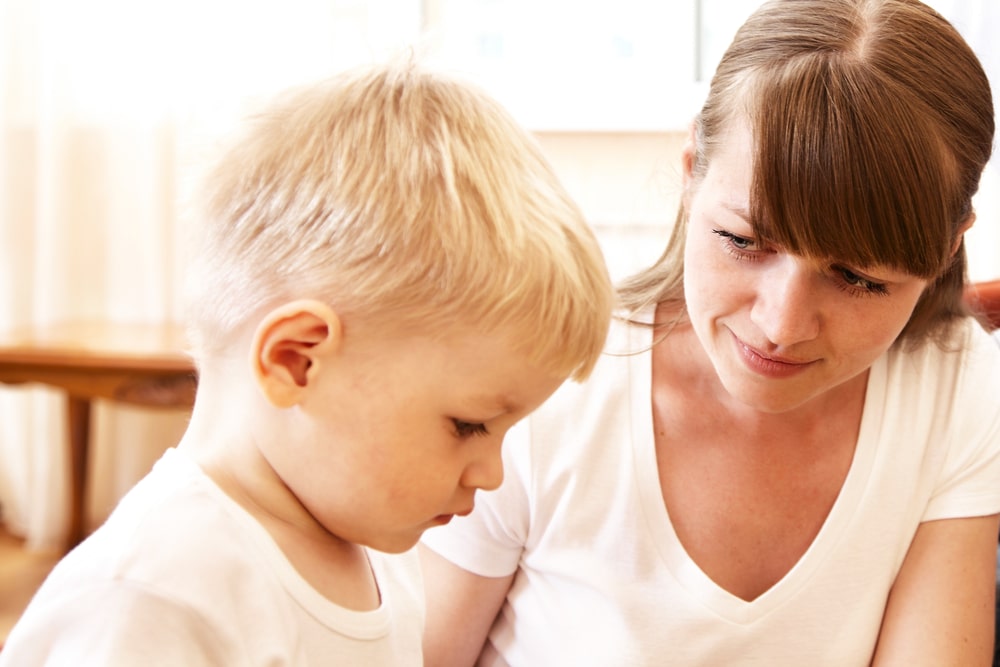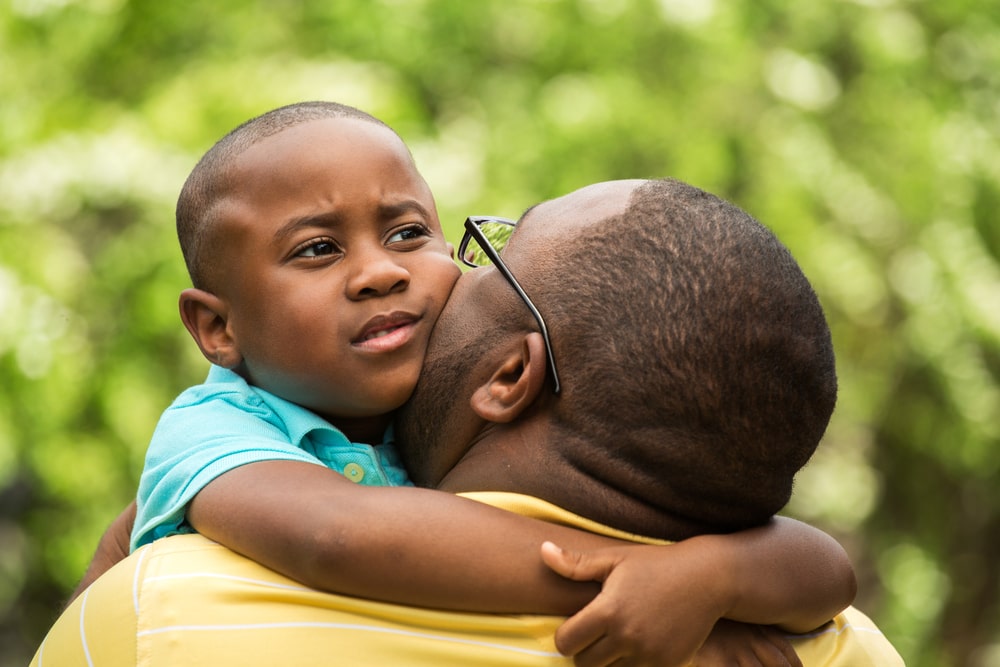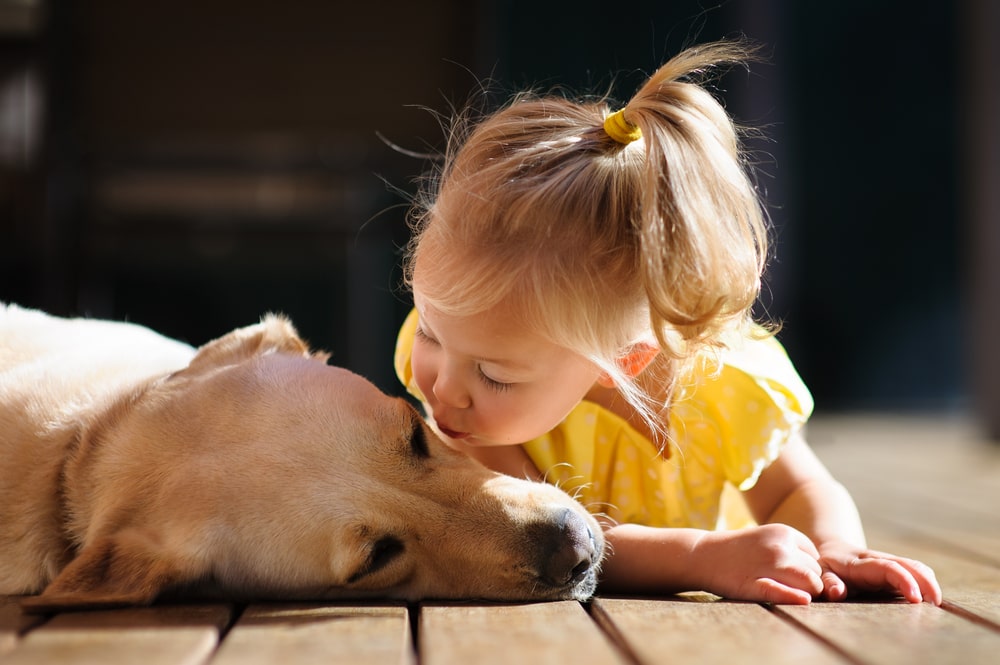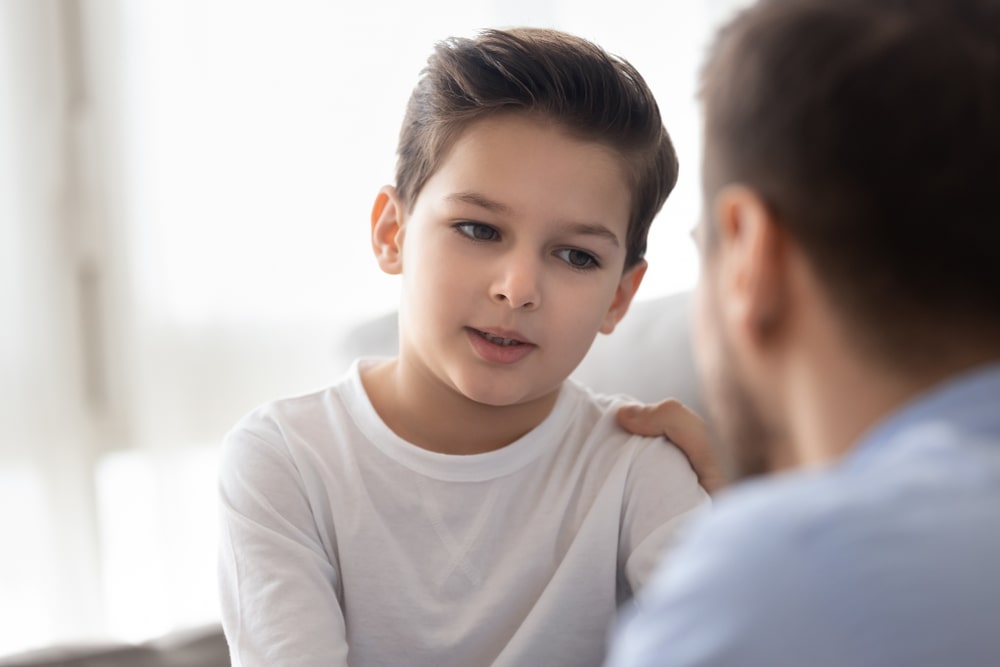Pets are a lovable, huggable, irreplaceable part of the family. This can be especially true for children, some of whom may not even remember a time when your pet wasn’t part of the family. Because your pet has always been around and has a special place in the family, your children may take its death hard. It may even be their first exposure to grief.
While we often want to shelter our children from the tough things in life, it’s better to help them face it than to prevent them from experiencing it. After all, life is filled with difficult situations our children will have to learn to navigate. That being said, there are helpful ways to talk about the death of a pet. Let’s go over 10 tips for talking with your children about the death of a pet so you can feel prepared to answer their questions and meet their emotional needs.
1. Be honest

Rather than sugarcoating the situation, stick to the truth. Taking your child’s age and maturity level into account, gauge just how much information they need to hear. It’s preferable to use words like “death” and “dying” – it will help the child realize the permanence of the pet’s absence. Also, stay away from saying things like, “Red ran away” or “Clover went on a trip.” These won’t help your child process their sadness and may make them feel abandoned. On top of that, if they find out you glossed over the truth, they may become angry at you for not telling them the truth.
If you must euthanize your pet, talk to your child about why it’s necessary, especially if they are older. If the death is more sudden, calmly explain what happened and answer their questions.
2. Keep it simple

Keep the information as simple as possible. Small children aren’t going to ask too many questions, but if they do, calmly answer them in simple terms. They need to know that the pet isn’t coming back, but you can share that information in a gentle way. For example, “Clover was in an accident today, sweetheart. She was hurt very badly, and she died. That means she won’t be coming back to us. Are you okay? Do you have any questions?”
If your child is older, take time to address their concerns. They will be more vocal with their questions. If you are considering euthanizing your pet for health or quality-of-life reasons, discuss the decision with your children and come to a decision together.
3. Break the news in a familiar place

When you break the news, make sure your child is in a safe and comfortable place. They are about to hear news that may deeply upset their world, so it’s best to make sure they are in a place they consider safe. Use a soothing voice, hold their hand, and minimize the distractions.
If you have multiple children, consider breaking the news to them individually. Each child will respond differently to the news of the pet’s death, and you will want to be able to respond to their separate needs.
4. Tell them it’s okay to be sad

Every child will respond differently when confronted with loss. Some are more likely to cry while others may seem unfazed. No matter your child’s reaction, it’s important that they know that whatever they feel is normal. If they need to cry, tell them that’s okay, and it’s good for them to cry if they feel sad. Don’t try to prevent them from expressing their grief. Instead, allow them to feel what they feel. In the long run, it’s better to allow a grieving child time and space to grieve than to make them think their feelings aren’t acceptable or normal.
5. Share your own feelings

As parents, the tendency may be to play down your own emotions so that you can “be strong” for your children. While it may feel counterintuitive, don’t try to hide your emotions from your child. Your openness and vulnerability will help your child understand that it's okay to express their own emotions. When you model healthy grief, it helps your child learn how to process grief and understand that it’s normal to feel sad when a death occurs. Of course, make sure not to frighten your child with your own emotions. Crying is fine, but for expressive forms of grief, find a time to be alone or with an adult you trust. You want to share in your child’s sadness – not overwhelm them with your own.
6. Avoid euphemisms

Children are very literal, so you have to be careful how you explain the death of a pet. If you euthanize your pet, don’t use the terms “to sleep” or “got put to sleep.” These terms may make your child afraid to go to sleep because they fear they won’t wake up. Or, they may develop possible fears about surgery or anesthesia because we use similar terms.
Also, don’t say that “God has taken” the dog or that it “went away.” In the first case, the child may begin to resent God for taking their pet away and wonder who God might take next. In the second case, a child may wait and wait and wait for the pet to return from wherever they “went away” to. It’s best to be completely truthful and tell your child that their pet has died, and that you are there to comfort them.
7. Reassure them

For some children, loss can trigger fear. They may fear that another pet will die or that people they love will die. In particular, they may fear that something will happen to you – their parent. Calmly and patiently calm their fears. Hold them close to you. Let them cry. Reassure them with words like, “I love you. I don’t plan to leave for a very long time.” Over the coming days, weeks, and months, they may suddenly fear that you will go away. Each time the fear crops up, reassure them of your love and that you plan to stay with them until you are very old.
8. Give them a chance to say goodbye

Just like adults, children need an opportunity to say goodbye to the family pet. For younger children, this may be as simple as placing a kiss on the pet’s head or attending a small family ceremony to bury the pet. Older children may want to be present if the pet is euthanized, but that decision should be left entirely up to them. No matter the age of your child, make a point of saying goodbye to your beloved family pet so that everyone feels a sense of closure and completion. This doesn’t mean that the grief is done, just that you have had a chance to say goodbye.
9. Answer their questions

Children are inquisitive by nature. According to the Association for Pet Loss and Bereavement, children between the ages of 7 and 9 will have the most questions about death. If your child does start asking questions, don’t panic. Continue to give simple yet truthful answers. There’s no need to go into great detail. Answer their specific question. And if you don’t know the answer, it’s okay to admit that you aren’t sure. Some things about death are still a mystery.
A few questions you may hear:
- Why did my pet die?
- Is it my fault?
- Where does my pet’s body go?
- Will I ever see my pet again?
- Is my pet in heaven?
- Can I make my pet come back?
10. Help them grieve

The final step is to help them through the grieving process. For many children, a pet can almost feel like a sibling – the bond is so close and deep. That’s why it’s important to help them grieve the loss of their dear, furry friend. You might plan a small memorial for your pet and let your child take part. Or, you could put together a scrapbook of photos and memories or create a DVD. You could place a photo of the pet in your child’s room or purchase a stuffed animal that looks similar to help bring them comfort.
Above all, encourage them to talk about what they’re feeling and look for ways to help them express those emotions. What they learn now – as children – will help them process grief as adults. Teach them now how to process grief in a healthy way, and they will carry it into their adulthood and use what they learned to cope with future grief.

No comments:
Post a Comment